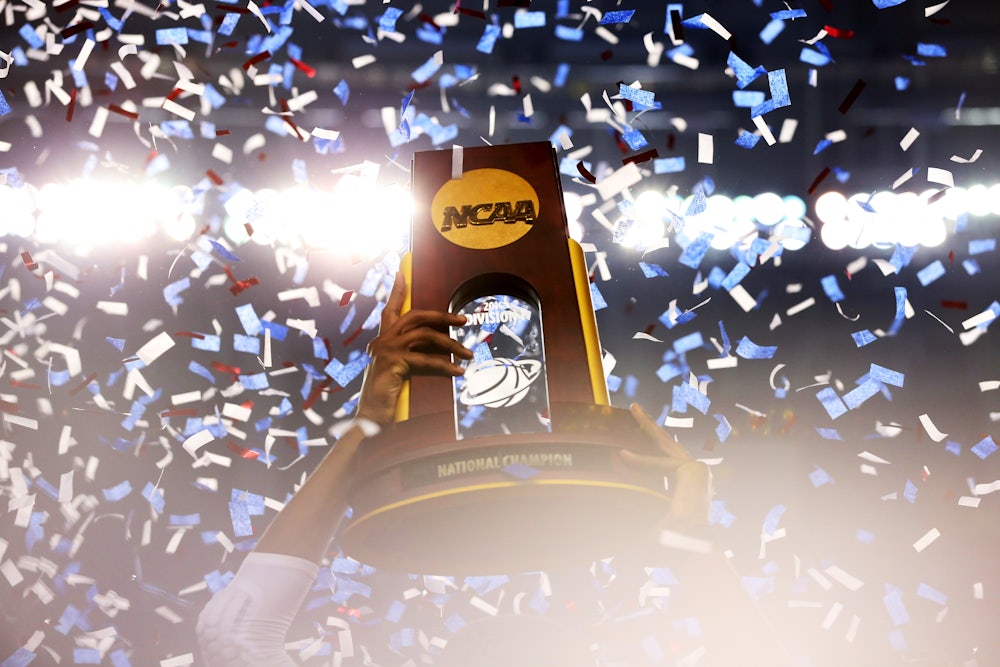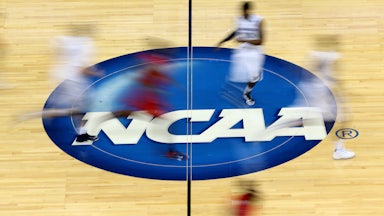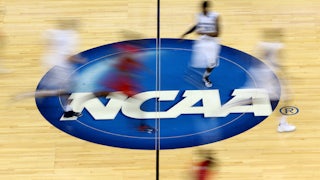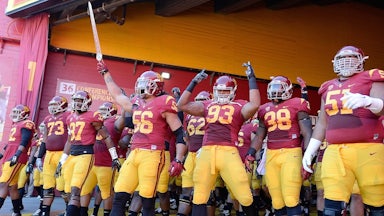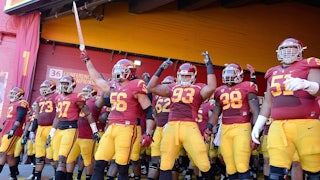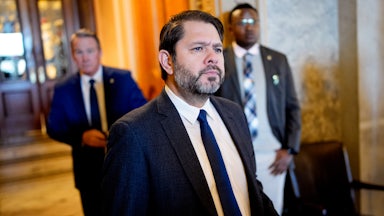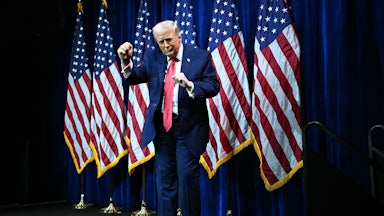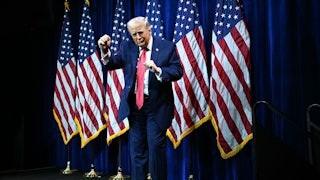This week, the Supreme Court struck a blow for the unpaid professional athletes who pretend to be amateurs so they can play on college teams. In NCAA v. Alston, the high court ruled unanimously that the National Collegiate Athletic Association may not impose certain limits on what colleges, with a broad wink to their alumni, call “education-related benefits.”
The decision is a likely prelude to a Supreme Court ruling at some later date that the NCAA may no longer bar colleges from compensating athletes in a more straightforward manner. One hint that this might follow is a concurring opinion by Associate Justice Brett Kavanaugh that reads like a recitation of Marx’s labor theory of value (“The NCAA and its member colleges are suppressing the pay of student athletes who collectively generate billions of dollars in revenues for colleges every year”). Another hint is that, in the decision’s first paragraph, the word “amateur” is placed inside quotation marks.
The high court’s introduction of economic reality to college sports is a welcome victory for labor rights; it seems only a matter of time before colleges pay student athletes something a bit closer to fair market value. But if we’re really going to bring economic logic into this discussion, why do colleges maintain professional-in-all-but-name sports teams in the first place?
Let me stipulate up front that I’m not a sports guy. My sports-guy-and-gal friends will tell you that any notions I possess about college sports carry no more intrinsic merit than the pope’s views on the Kama Sutra. To that I reply: Benign detachment frees me to consider college sports in the rational frame of mind that you’re unable to summon, blinded as you are by devotion to your school team.
We can all agree, I think, that higher education is in a crisis economically. The sticker price for tuition is obscenely high; with tuition and fees, according to U.S. News & World Report, the total cost averages $35,000 for private colleges, $21,000 for out-of state students at public colleges, and $10,000 for in-state students at public colleges. Only a handful of colleges can afford to provide need-based financial aid, or enough need-based aid. Meanwhile, colleges have such a hard time meeting payroll that tenure-track professors are steadily being displaced by adjunct professors, nearly 25 percent of whom are so poorly paid that they rely on public assistance, according to a survey conducted last year by the American Federation of Teachers.
This dismal set of facts makes it vitally necessary that institutions of higher education find better ways to economize. Yet it’s somehow a given that colleges must pour millions of dollars into their sports programs. Perhaps you believe NCAA sports help keep colleges afloat financially. There was a time when that was true. A 1929 study by the Carnegie Foundation reported that football programs were especially profitable, with Yale, for instance, netting $349,000, or more than $5 million in today’s dollars. (Even then, however, the report’s authors warned of “the material rewards of covert professionalism,” citing extravagant fees paid to professional coaches.)
But 1929 was a very long time ago. Today, college sports are a money loser nearly everywhere, with the best teams (Yale’s no longer among them) typically netting the biggest financial losses. NCAA President Mark Emmert once calculated that only 14 universities made money off their athletic programs.
If colleges are going to maintain their existing sports programs, they ought to pay the players, because nobody believes those players are amateurs. They’re exploited professionals, as documented by Taylor Branch in an influential 2011 Atlantic article and in Joe Nocera and Ben Strauss’s 2016 book, Indentured. But if universities pay these indentured servants what they’re worth, the mighty river of red ink already generated by college sports (especially within Division I, the top tier) will overflow its banks and engulf the college green.
That prospect doesn’t worry Andy Schwartz, a sports economist based in Emeryville, California. “Campuses abound with money-losing departments that nevertheless pay the talent,” Schwartz has written. “Schools do this because having a History Department (that has no real source of revenue) is part of the university’s mission.” Having an athletics department is part of a college’s mission, too, Schwartz contends. If the college has to dig into its pockets a bit further to pay the athletes, it will do so.
Schwartz is probably right about that last part. But isn’t this expenditure sort of … insane? I must’ve stepped out of the room when God decreed that the NCAA was “part of the university’s mission.” Alternatively, college sports are sometimes described as a university’s “front porch,” a phrase coined by Scott Barnes, athletic director at Oregon State University, to describe the crucial role sports play in drawing potential customers. “It’s not the most important room in the house, but it is the most visible,” Barnes told The New York Times in 2009.
It may also be the most expensive. College athletics can cost a college student at a Division I school literally thousands of dollars in student fees. According to a report last year by NBC News, these student fees sometimes account for the majority of the revenue collected by the athletic department; at James Madison, for instance, they furnished 75 percent. Let’s hope these undergraduates enjoy rocking on their front porch, because they pay dearly for it.
Erica Blom, a senior research associate at the Urban Institute, calculated in 2018 that eliminating the athletics programs at all Division I schools would save $2.5 billion. That money, she pointed out, could instead be spent on creating $4,000 scholarships distributed to more than 615,000 students. Alternatively, it could be used to get some adjunct professors off welfare.
“You’re too freaking rational about this,” Nocera, now a Bloomberg columnist, told me. (He’s one of my sports-guy friends. He didn’t actually say “freaking.”) “Universities should not be running a multimillion-dollar entertainment business,” he said. “But they are. And they’re just never gonna stop.”
But never is an awfully long time. Look, I’m not saying colleges shouldn’t field football and basketball teams to play teams at other colleges. But the professional sheen on such activities has gotten too expensive to maintain. Can’t the serious athletes who now play on these teams find professional basketball or football teams to play for? That may require some restructuring of the professional leagues, or the introduction of new ones. But I don’t doubt these alternatives will materialize if the NCAA is shut down; the fans will insist on it. Whatever financial losses these innovative new sports ventures generate will no longer be academia’s problem.
In 1939, University of Chicago President Robert Maynard Hutchins shut down the football team because he thought it had devolved into “crass professionalism.” Football later returned to U. Chicago, but at a more recognizably amateur level. The university survived, even thrived. Colleges compete over which can throw the most cash at money-losing athletic programs because they want to, not because they have to. Maybe one day they’ll wake up to that fact, acknowledge that Hutchins was right, and follow his lead.
